In 2025, the hat embroidery machine market has seen significant advancements, driven by the demand for personalized apparel and corporate branding. This article provides an in-depth analysis of the market, covering types, performance, design, technical specifications, and the latest technology features. It offers valuable insights and assistance for professional buyers in making informed decisions to enhance their business operations.
Table of Contents:
– Market Overview of Hat Embroidery Machines
– Detailed Analysis of the Hat Embroidery Machine Market
– Key Trends and Innovations in the Hat Embroidery Machine Market
– Key Factors When Selecting a Hat Embroidery Machine
– Latest Technology Features in Hat Embroidery Machines
– Compatibility with Other Devices and Systems
– Durability and Quality of Hat Embroidery Machines
– Future Trends in Hat Embroidery Machines
– Wrapping Up
Market Overview of Hat Embroidery Machines
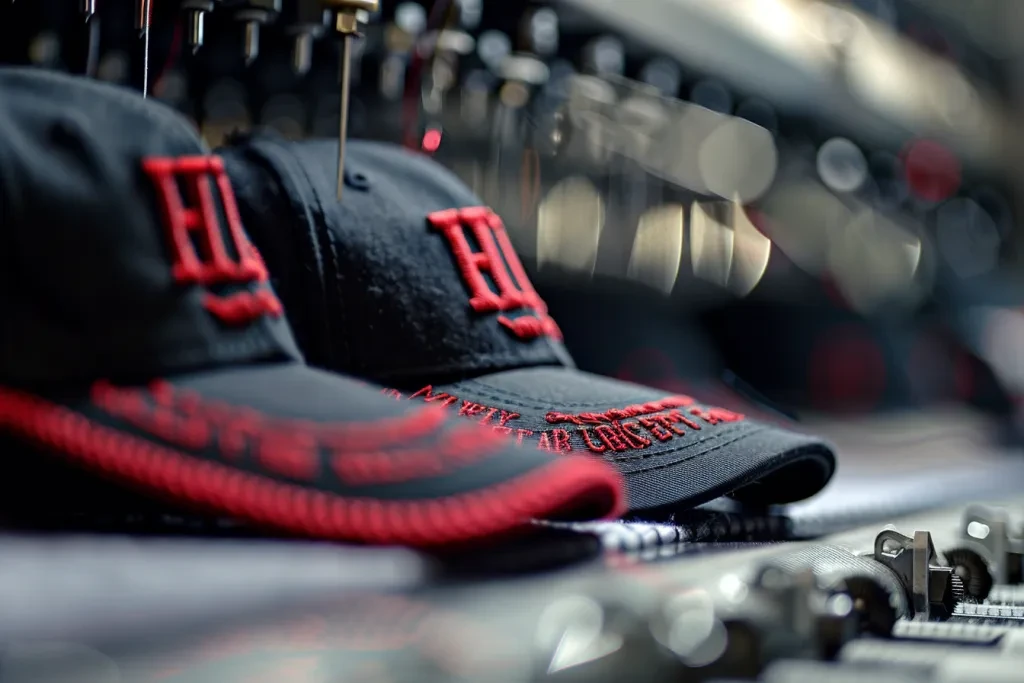
The global embroidery machine market, including hat embroidery machines, grew from USD 2.02 billion in 2023 to USD 2.10 billion in 2024. It is projected to reach USD 2.71 billion by 2030, with a compound annual growth rate (CAGR) of 4.30%. This growth is driven by the rising demand for personalized and custom-designed apparel, such as hats, for corporate branding and event merchandise. Favorable government regulations and policies promoting the textile industry also support this market expansion.
Regionally, the Americas, especially the United States and Canada, show strong demand for embroidery machines due to the fashion customization trend. The Asia-Pacific region, led by China, India, and Japan, is experiencing robust growth due to the expanding textile industry and increasing exports of embroidered goods. Europe, the Middle East, and Africa (EMEA) also offer significant opportunities, with high demand for sophisticated embroidery machines that provide extensive customization and high efficiency.
Detailed Analysis of the Hat Embroidery Machine Market
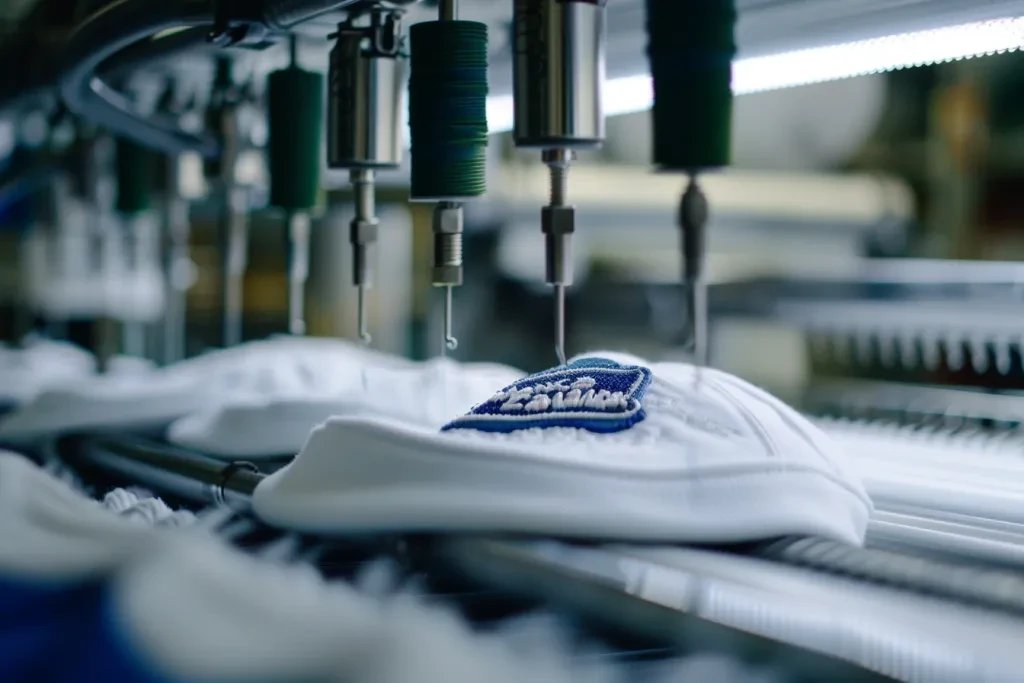
The hat embroidery machine market is marked by key performance benchmarks and dynamics. The demand for multi-head embroidery machines is rising as they boost productivity and efficiency, essential for meeting the growing consumer demand for custom-designed hats. These machines are particularly popular among small businesses and entrepreneurs seeking to scale their operations.
Consumer preferences have shifted towards unique, personalized products, driving the need for high-quality and efficient embroidery machines. The economic benefits of advanced, automated embroidery machines, such as reduced labor costs and increased production speed, also influence the market. However, challenges like thread and needle breaks and machine jamming lead to higher maintenance costs and operational downtime.
Recent innovations include advancements in digitalization and automation. Modern machines now feature computerized systems that allow users to set up intricate designs digitally, which the machines then accurately reproduce on fabric. This trend towards digitalization is expected to continue, with further integration of connectivity features to enhance production efficiency and customization capabilities.
Key Trends and Innovations in the Hat Embroidery Machine Market
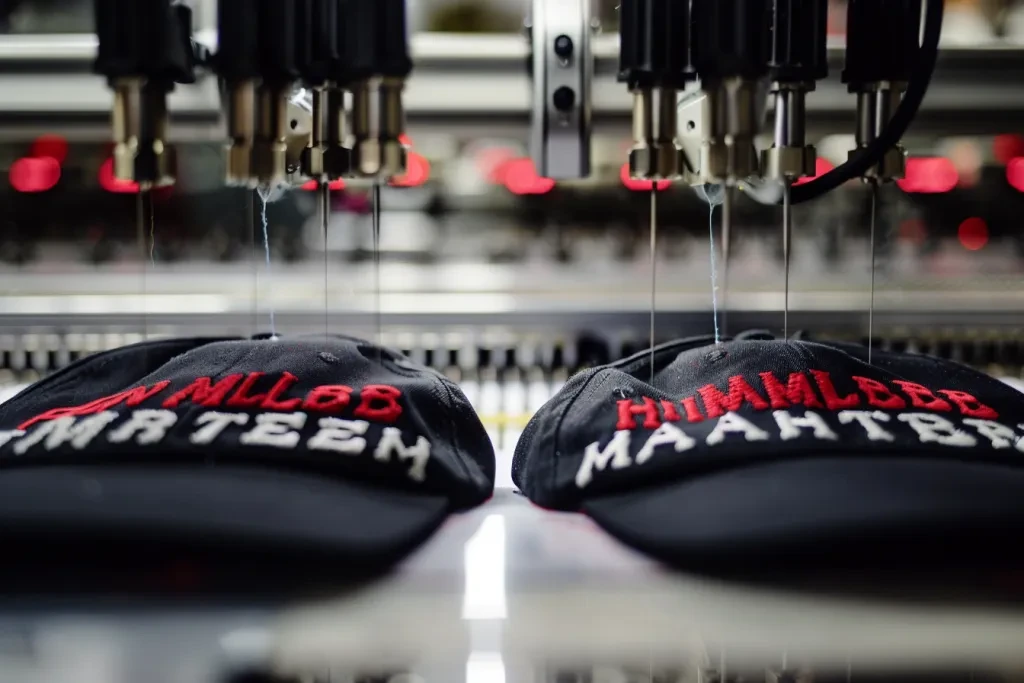
The hat embroidery machine market is experiencing several notable trends and innovations. One significant trend is the increasing adoption of automated systems, which offer precise and consistent embroidery quality, crucial for large-scale manufacturing and customization. This trend is likely to continue, with further technological advancements enhancing production speed and reducing labor costs.
Another key trend is the growing demand for multi-head embroidery machines. These machines handle multiple needles and threads simultaneously, significantly improving productivity and efficiency. This is especially important for businesses aiming to meet the high demand for custom-designed hats quickly and efficiently.
Innovations in the market include user-friendly interfaces and advanced networking capabilities. For instance, Brother Industries recently launched a new embroidery machine for start-up businesses, featuring an intuitive interface and advanced networking to streamline operations. Similarly, HSW introduced its 5G embroidery machines, promising enhanced performance, speed, and efficiency, setting new industry standards.
These trends and innovations emphasize the market’s focus on improving efficiency, productivity, and customization capabilities to meet the growing demand for personalized, high-quality embroidered products. As the market evolves, businesses investing in advanced, automated embroidery machines will be well-positioned to capitalize on opportunities and address challenges in the hat embroidery machine market.
Key Factors When Selecting a Hat Embroidery Machine
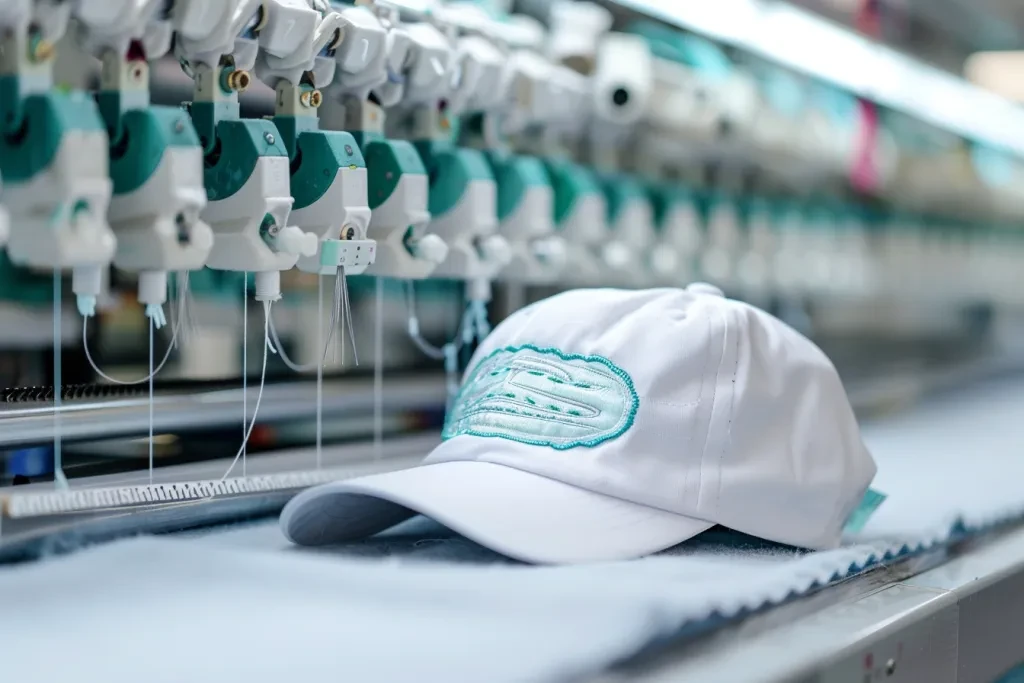
Types and Styles of Hat Embroidery Machines
Choosing the right hat embroidery machine is crucial for your business needs. The main types include single-head and multi-head machines. Single-head machines are ideal for small businesses or startups, offering versatility and ease of use. These machines typically feature a single embroidery head, which can handle various hat styles, from baseball caps to beanies.
Multi-head machines are designed for higher production volumes. They feature multiple embroidery heads, allowing simultaneous embroidery on multiple hats. This boosts productivity and efficiency, making them suitable for larger operations or businesses looking to scale up. Multi-head machines come in configurations such as 2-head, 4-head, or even 12-head models, depending on production needs.
Another style to consider is the compact or portable hat embroidery machine. These machines are smaller and lighter, making them easy to transport and store. They are perfect for businesses with limited space or those requiring mobility, such as event-based embroidery services.
Performance and Functionality
Performance is critical when selecting a hat embroidery machine. Key metrics include stitch speed, precision, and the range of available stitches. High-performance machines can operate at speeds exceeding 1,000 stitches per minute, ensuring quick turnaround times for large orders. Precision affects the quality and consistency of the embroidery. Look for machines with advanced needle positioning and tension control features to achieve high-quality results.
Functionality encompasses the machine’s capabilities and features. Modern hat embroidery machines often come with built-in design software, allowing for on-the-fly adjustments and customizations. Some machines also support USB connectivity or wireless networking, enabling easy transfer of design files. Additionally, consider machines with automatic thread trimming and color change features, which can reduce manual intervention and improve workflow efficiency.
Ergonomically designed machines with user-friendly interfaces can reduce operator fatigue and increase productivity. Look for machines with adjustable workstations, intuitive touchscreens, and easy access to key components for maintenance and adjustments.
Machines equipped with advanced hooping systems and cap frames ensure that the hats are held securely and embroidered accurately. This results in clean, professional-looking designs without misalignment or distortion. Additionally, some machines offer customizable lighting options, which can enhance visibility and precision during the embroidery process.
Technical Specifications
Understanding the technical specifications of hat embroidery machines is essential for making an informed decision. Key specifications include the maximum embroidery area, needle count, and compatibility with different types of threads and fabrics. The maximum embroidery area determines the size of the designs you can create. Machines with larger embroidery areas offer more flexibility and are suitable for intricate, large-scale designs.
Needle count is another important specification. Machines with more needles can handle multiple thread colors simultaneously, reducing the need for manual thread changes and increasing efficiency. Common needle configurations include 6-needle, 12-needle, and 15-needle machines. Compatibility with various threads, such as polyester, rayon, and metallic threads, as well as different fabrics, ensures that the machine can handle a wide range of projects.
Price Range and Budget
The price range of hat embroidery machines varies widely, depending on the type, performance, and features. Entry-level single-head machines can start at around $5,000, making them accessible for small businesses or startups. Mid-range multi-head machines typically range from $10,000 to $30,000, offering a balance of performance and affordability.
High-end industrial machines, designed for large-scale production, can exceed $50,000. These machines come with advanced features, such as automated maintenance, high-speed operation, and extensive design libraries. When setting a budget, consider not only the initial purchase cost but also the long-term operational costs, including maintenance, thread, and other consumables.
Latest Technology Features in Hat Embroidery Machines
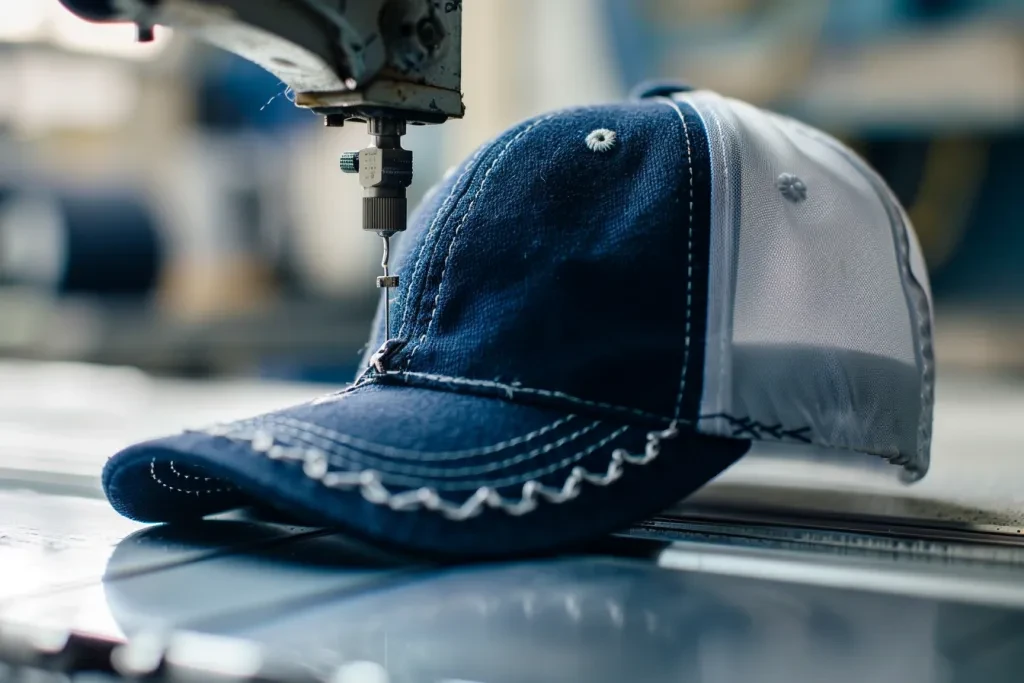
Automation and Smart Features
The latest hat embroidery machines are equipped with advanced automation and smart features that enhance productivity and ease of use. Automation features include automatic thread cutting, color changes, and tension adjustments. These features minimize manual intervention, allowing operators to focus on other tasks and increasing overall efficiency.
Smart features, such as built-in design software, touchscreen interfaces, and wireless connectivity, offer greater control and flexibility. Operators can easily upload, edit, and preview designs directly on the machine. Some models also include cloud-based design libraries and remote monitoring capabilities, enabling seamless collaboration and real-time updates.
Energy Efficiency and Sustainability
Energy efficiency is becoming an increasingly important consideration in the machinery industry. Modern hat embroidery machines are designed to consume less power without compromising performance. Energy-efficient motors, LED lighting, and automated power-saving modes contribute to lower energy consumption and reduced operational costs.
Sustainability is also a key focus, with manufacturers using eco-friendly materials and production methods. Machines with recyclable components and environmentally friendly packaging help reduce the overall environmental impact. Additionally, some models feature waste-reducing technologies, such as precise thread trimming and efficient use of consumables.
Safety Standards and Certifications
Safety is paramount when operating hat embroidery machines. Ensure that the machine you choose complies with industry safety standards and certifications, such as CE, UL, and ISO. These certifications indicate that the machine has undergone rigorous testing and meets the required safety and performance criteria.
Safety features to look for include emergency stop buttons, needle guards, and automatic shut-off mechanisms. These features protect operators from potential hazards and ensure safe operation. Regular maintenance and adherence to safety guidelines further enhance the longevity and reliability of the machine.
Compatibility with Other Devices and Systems
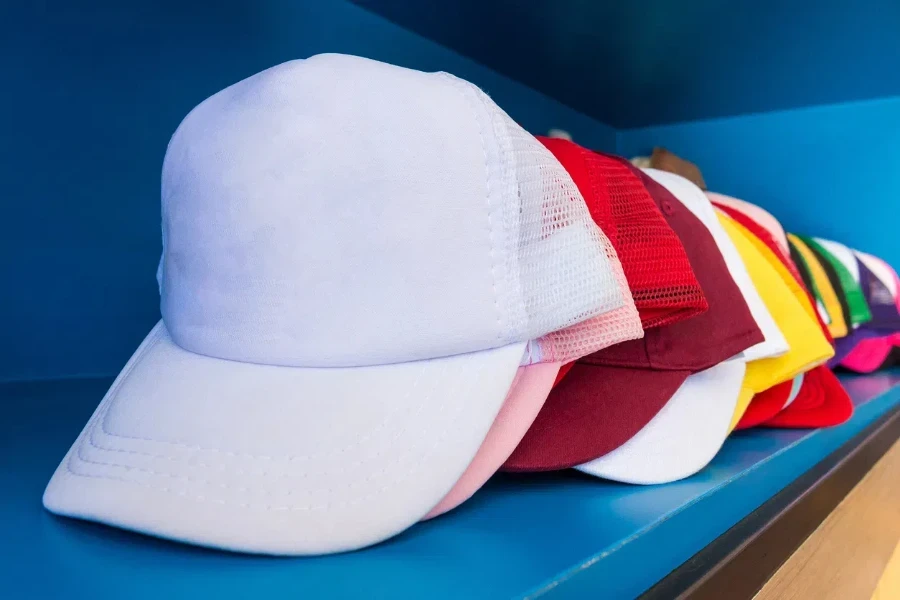
Integration with Design Software
Compatibility with design software is crucial for efficient operation. Many hat embroidery machines support popular design software, such as Adobe Illustrator, CorelDRAW, and Wilcom. This compatibility allows for seamless transfer of design files and easy customization. Some machines also offer proprietary software with advanced design capabilities, including 3D modeling and simulation.
Connectivity Options
Modern hat embroidery machines come with various connectivity options, including USB ports, Ethernet, and Wi-Fi. These options enable easy transfer of design files and remote operation. Machines with wireless connectivity can integrate with cloud-based storage and design libraries, providing access to a vast array of designs and resources.
Integration with Production Systems
For larger operations, integration with production management systems is essential. Machines that support integration with ERP (Enterprise Resource Planning) and MES (Manufacturing Execution Systems) allow for streamlined workflow and real-time monitoring. This integration helps optimize production schedules, track inventory, and ensure timely delivery of orders.
Durability and Quality of Hat Embroidery Machines
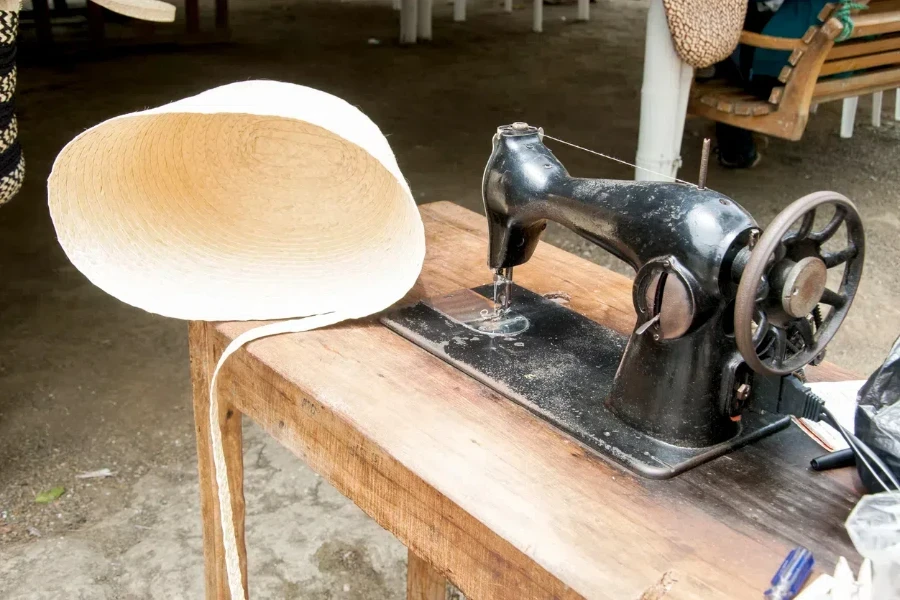
Build Quality and Materials
The build quality and materials used in hat embroidery machines directly impact their durability and performance. High-quality machines are constructed from robust materials, such as steel and aluminum, which ensure longevity and resistance to wear and tear. Precision-engineered components, such as bearings and drive systems, contribute to smooth operation and reduced maintenance needs.
Maintenance and Support
Regular maintenance is essential for keeping hat embroidery machines in optimal condition. Look for machines that offer easy access to key components, such as needles, bobbins, and thread paths, for routine cleaning and maintenance. Manufacturers that provide comprehensive support, including technical assistance, training, and spare parts, help ensure the machine’s reliability and longevity.
Warranty and After-Sales Service
A solid warranty and reliable after-sales service are crucial for protecting your investment. Reputable manufacturers offer warranties that cover key components and provide assurances against defects and malfunctions. Additionally, responsive after-sales service, including technical support and access to replacement parts, ensures minimal downtime and uninterrupted production.
Future Trends in Hat Embroidery Machines
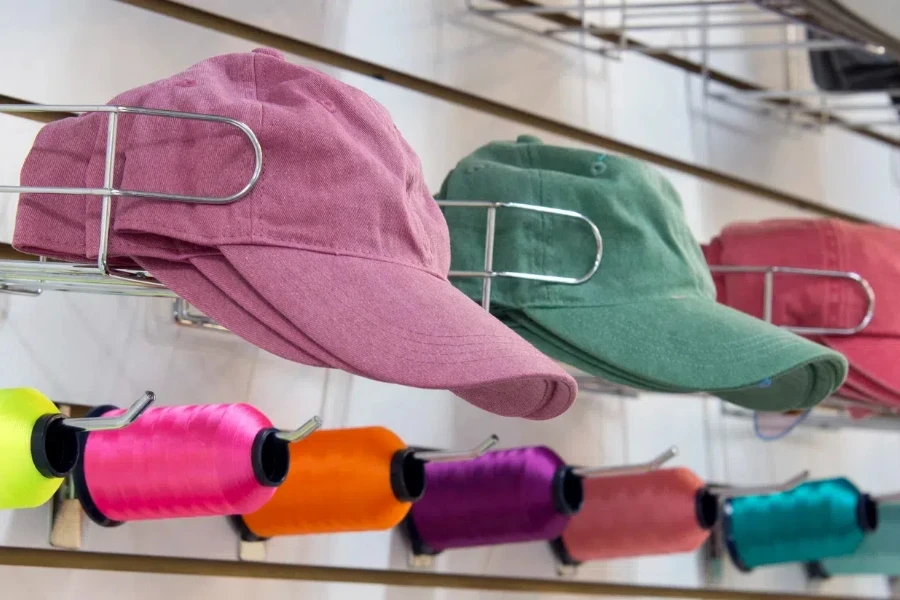
Artificial Intelligence and Machine Learning
Artificial intelligence (AI) and machine learning (ML) are poised to revolutionize the hat embroidery industry. AI-powered machines can analyze design patterns and optimize embroidery processes for improved efficiency and quality. Machine learning algorithms can predict maintenance needs and detect potential issues before they cause downtime, ensuring continuous operation.
Customization and Personalization
The demand for customized and personalized products is driving innovation in hat embroidery machines. Advanced design software and digital printing technologies enable businesses to offer unique, bespoke designs to customers. Machines with high-resolution imaging capabilities and precise stitching allow for intricate, detailed embroidery, catering to the growing market for personalized apparel.
Sustainable and Eco-Friendly Practices
Sustainability will continue to be a major focus in the machinery industry. Manufacturers are developing eco-friendly machines that use less energy, produce minimal waste, and incorporate recyclable materials. Sustainable practices, such as using organic threads and reducing water consumption, will become increasingly important as businesses strive to meet environmental standards and consumer expectations.
Wrapping Up
When selecting a hat embroidery machine, consider factors such as types and styles, performance, design, technical specifications, and price range. Modern machines offer advanced features, energy efficiency, and safety standards, ensuring high-quality, durable, and reliable performance. By staying informed about the latest trends and technologies, you can make an informed decision that meets your business needs and supports future growth.




